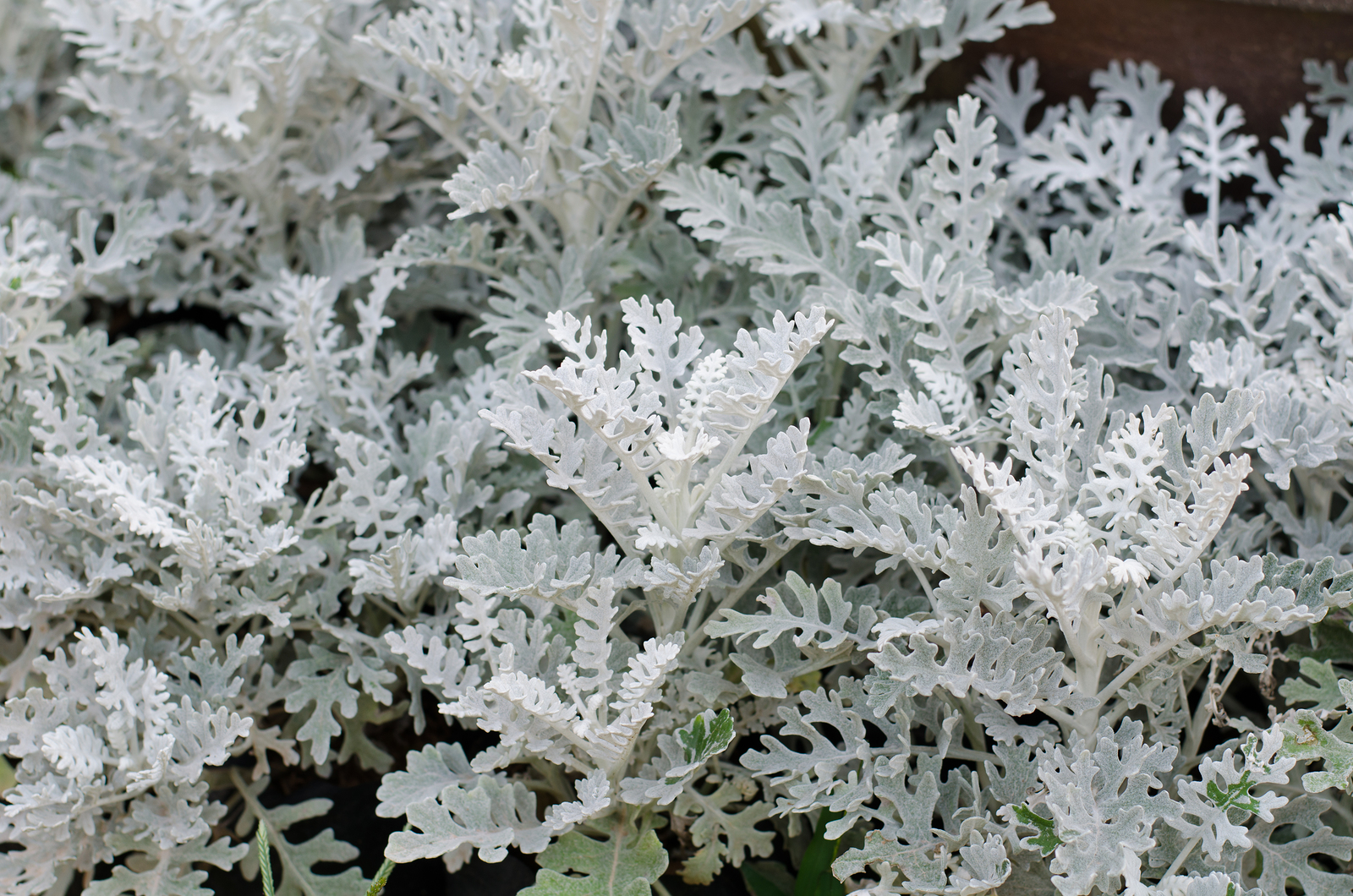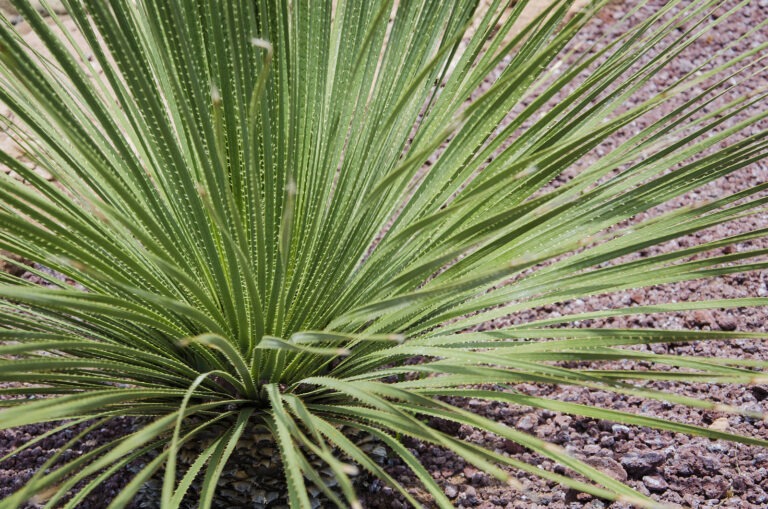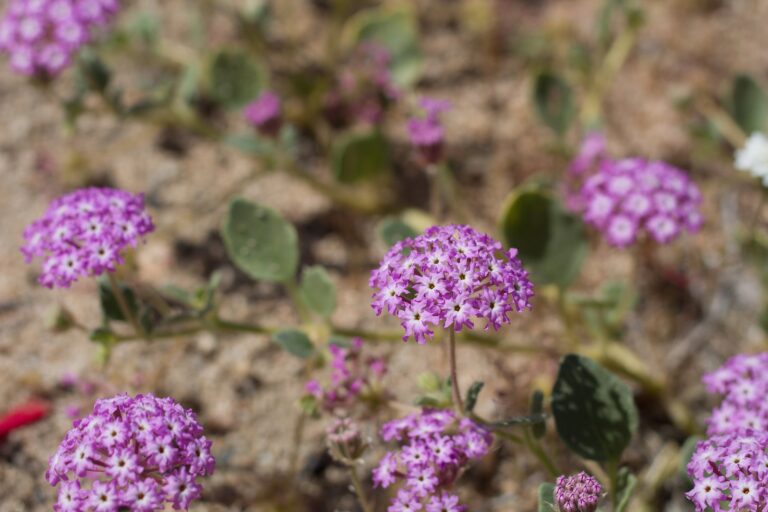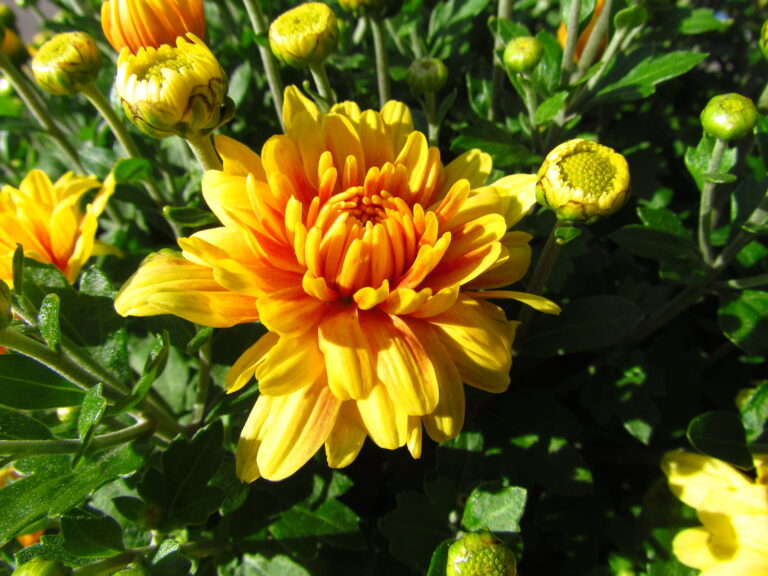How to Grow Dusty Miller — Centaurea cineraria
Dusty Miller, Centaurea cineraria, with its silver velvety foliage adds light to gardens. The leaves are nearly reflective as walkway edgings at night. Its compact form fits nicely in open spots in beds and borders. Summer flowers are usually mustard yellow and occasionally purple, but they are nearly an afterthought to the decorative foliage.
Centaurea cineraria grow 6 to 24 inches (15-61cm) tall and 6 to 18 inches (15-45cm) wide. It prefers relatively dry soil and tolerates heat. It is a good choice for window boxes and containers. In mild winter climates, it can be grown as a perennial.
Good Products for Growing Flowers at Amazon:
- Garden Safe Snail and Slug Bait
- Bonide Sulfur Fungicide
- Monterey BT Caterpillar Killer
- Neem Bliss 100-% Cold Pressed Neem Oil
- Safer Brand Insect Killing Soap
- PyGanic Botanical Insecticide
Centaurea cineraria belong to a genus of about 450 species. Other members of the genus often grown in gardens are Centaurea cyanus, commonly called bachelor’s button, and Centaurea montana, mountain bluet.
Senecio cineraria is a perennial version of Dusty Miller.
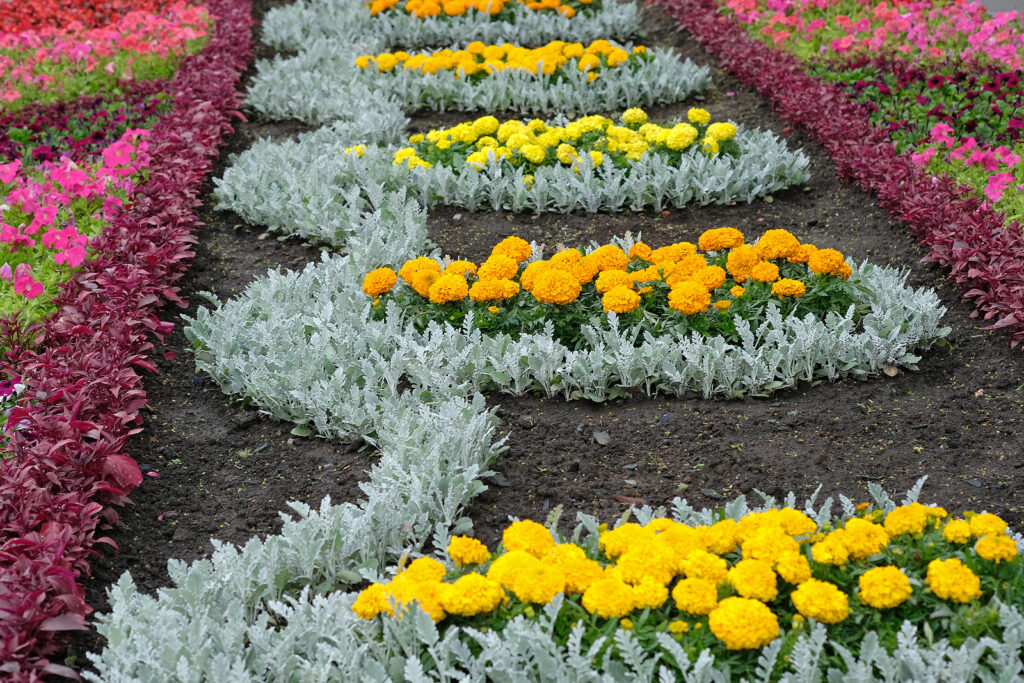
Get to know Dusty Miller
- Plant type: Perennial is often grown as an annual
- Growing Zones and range: Zones 6-11
- Hardiness: annual in Zones 2-5; perennial in Zones 6-11
- Height and width: 6 to 24 inches (15-61cm) tall; 6 to 18 inches (15-45cm) wide
- Foliage: Compact clumps 1- 1½ feet high of strap-shaped, lobed, velvety gray-white leaves
- Flowers: Small yellow blooms in the second year of growth
- Bloom time: Mustard yellow flowers appear in the second year
- Uses: Edging, borders, and filler in beds
- Garden companions: Grow as a complement to perennials with purple and pink flowers
- Common name: Dusty Miller
- Botanical name: Centaurea cineraria
- Family: Asteraceae
- Origin: Europe and the Mediterranean
Related Centaurea articles:
How to Grow Bachelor’s Buttons — Centaurea cyanus
How to Grow Centaurea Montana — Perennial Cornflower
Where to plant Dusty Miller
- Plant dusty miller in full sun.
- Grow dusty miller in average garden soil that is well drained.
Dusty Miller uses
- Excellent container plant; tolerates heat.
- The cool hue of dusty miller complements hot-colored flowers such as petunias, salvias, and geraniums.
- Adds texture and interest to mixed plantings in patio containers and window boxes.
- Use foliage material for cut flower arrangements.
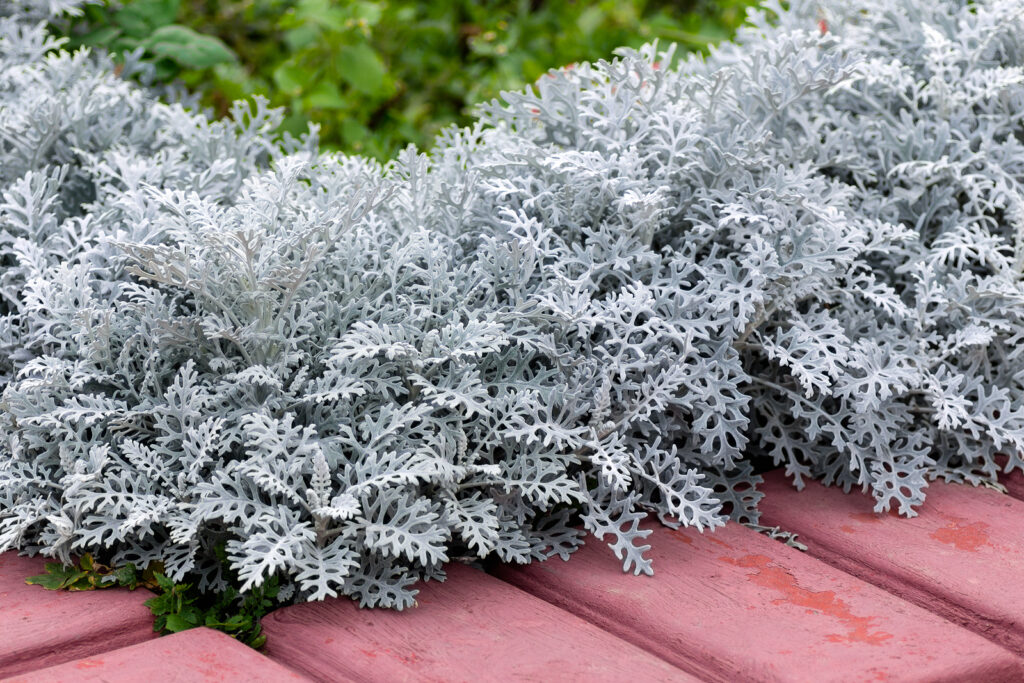
When to plant Dusty Miller
- Set dusty miller in the garden in spring after all danger of frost has passed.
Planting and spacing Dusty Miller
- Space dusty miller 6 to 18 inches apart.
How to water and feed Dusty Miller
- Dusty Miller needs light moisture. Keep the soil evenly moist but not wet. Avoid wetting leaves. Dusty Miller is drought tolerant.
- Dusty Miller planted in average garden soil will not need extra fertilizer.
Dusty Miller care
- Mulch with aged compost around dusty miller to conserve soil moisture.
- Trim back plants after flowering to keep plants compact.
- Aphids can sometimes attack dusty miller.

Dusty Miller propagation
- Take cuttings in spring or summer to start new plants.
- Start seed indoors; from seed dusty miller is slow growing.
Dusty Miller varieties to grow
- Centaurea cineraria, dusty miller. Silver-leafed plant; felty white, divided foliage. Cultivars: ‘Silver Dust’ and ‘Silver Lace’ have lacy foliage.
- ‘Cirrus’ has rounded foliage.
- Centaurea gymnocarpa, also called dusty miller, grows to 3 feet with velvety white leaves; flower heads are purple.
- Senecio cineraria is a perennial version of dusty miller.
Dusty Miller frequently asked questions
Q: I have seen several plants called Dusty Miller. Why?
A: Dusty miller is a common name given to several plants that have white, silver, or gray foliage, and no significant flowers. They may be members of the Senecio, Centaurea, or Chrysanthemum genera.
Q: How do I grow dusty miller?
A: Dusty miller likes full sun or partial shade, light dry soil, and little fertilizer. If the plants become leggy, they can be cut back.
Q: I have seed dusty miller with very fine foliage. What was it?
A: It was probably Silver Lace, which has extremely lacy, finely-cut leaves. For an interesting contrast, plant Silver Lace with Silverdust or Cirrus which have broader leaves.

